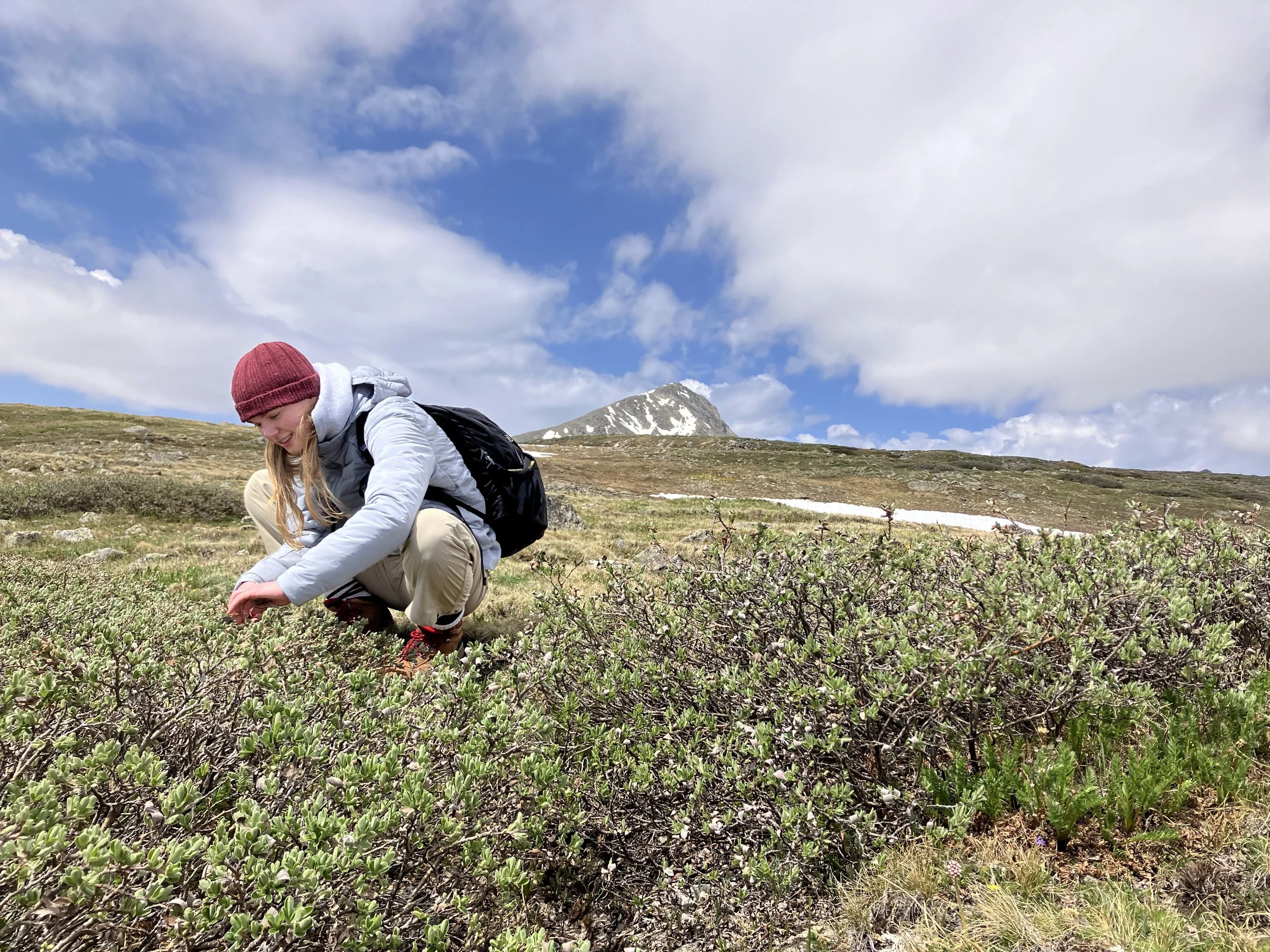Q & A with Niwot Co-PI Will Wieder.
Dr. Will Wieder, a Co-PI of the Niwot Ridge LTER and a research scientist at the National Center for Atmospheric Research, has a long history on Niwot Ridge that dates back to the late 90’s. Photo by Nancy Emery.
If you join Niwot for one of our weekly all-hands meetings, you will likely run into Dr. Will Wieder. A friendly, engaged member of our research community, Dr. Wieder is a Co-PI of the Niwot Ridge LTER, a research scientist at the National Center of Atmospheric Research, and the project lead of a new study on shrub encroachment on Niwot Ridge.
On a recent Friday morning, Dr. Wieder gave us some of his time for a Q&A session about his history on Niwot Ridge and his collaborative, new project on shrub encroachment:
I’d love to hear a little bit about how you got started working on Niwot Ridge. When were you first up on the Ridge, and what was your first project?
I first came to Niwot as an undergraduate in Joyce Gelhorn's alpine botany class (I think it was the summer of 1998). Nearly a decade later I was a graduate student at INSTAAR, but focused on tropical soil biogeochemistry. Through the INSTAAR connection I was able to work at Niwot, helping other graduate students with their field research. I didn't start more sustained work at Niwot until 2014, when I came back to help design and install the sensor network and subsequently begin piloting some modeling studies at the Saddle.
All of us here at Niwot are excited about your new work on shrub encroachment! Can you give us a sense for what led to this work? Was there a particular moment, observation, or conversation that kicked it off?
The ideas for the shrub project came from Katya Jay's interest in shrub encroachment and her work with remote sensing data. We were also inspired by work out of Katie Suding's group that quantified large-scale shrub expansion using aerial photography, but that also found sluggish willow growth rates when they were planted in open top chambers. My own interest in the belowground, mycorrhizal aspects of the study came from work in other systems that emphasizes potential ecological syndromes of ectcmycorrhizal vs. arbuscular mycorrhizal symbioses. Tundra plants at Niwot are interesting since they aren't thought to have either (whereas willows are thought to be ectcmycorrhizal).
In describing your new shrub encroachment project, you mentioned that “some aspects of woody encroachment are relatively well-understood.” Can you give us a couple examples of what, in your view, we understand relatively well?
There's been a bunch of shrub work in the Arctic, especially from the Arctic LTER where shrubs are known to create their own microclimate by catching and accumulating more windblown snow. This warms soil temperatures in the winter and cool soil temperatures in the summer. Shrubs also alter soil biogeochemical cycling, productivity, and ecosystem nitrogen availability.
Work by Dr. Wieder and colleagues seeks to understand how and why shrubs are expanding into alpine tundra ecosystems on Niwot Ridge and beyond. Pictured here is Annie Gilbert, (then) a CU Boulder undergraduate research assistant, harvesting a cutting from a willow (Salix sp) for a greenhouse experiment. Photo by Katya Jay.
Along those lines, what would you say is the most important potential outcome of your newly funded project? In other words, why is this work important?
Over the last 50 years, one of the biggest changes that we can see in alpine ecosystems at Niwot Ridge is the increase in shrub abundance. Beyond this change in vegetation communities, we don't really know how the shrubs are expanding, why their rates of expansion seem to vary so greatly, how common this pattern is elsewhere, or what other changes may be associated with increasing shrub abundance. This project lets us start scratching the surface on understanding how one of the most iconic landscapes in the Colorado high country may be changing before our eyes.
I know this project also includes new outreach activities; can you give us a sneak peek?
We're going to work with Science Discovery to develop week-long summer camp for middle school students called “Programming in Python.” Students will learn how to visualize different climate model outputs and climate change scenarios via coding tutorials. Scholarship funds will be allocated to recruiting 16 participants per class (32 students total).
What a great opportunity for students to apply coding skills as they learn about climate change and climate modeling! As for you and your team, what fieldwork will you be doing this upcoming summer on Niwot Ridge related to your new project? Can you give us a sense for what we’ll find you doing if we bump into you on the Ridge?
There's actually very little known about alpine mycorrhizal communities in the Front Range, so we'll start by surveying mycorrhizal colonization and quantify mycorrhizal diversity in shrub and alpine tundra plant communities. We'll also start a larger trial for our greenhouse experiment aimed at assessing shrub survival when we plant them back in the field.
Sounds as though you have a busy summer ahead of you. We look forward to hearing what you learn this summer, and beyond!




